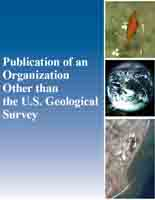Characteristics of day-roosts used by the Northern Long-eared Bat (Myotis septentrionalis) in coastal New York
Links
- More information: Publisher Index Page (via DOI)
- Open Access Version: External Repository
- Download citation as: RIS | Dublin Core
Abstract
In North America, Myotis septentrionalis (Northern Long-eared Bat) has experienced precipitous declines from white-nose syndrome. As these bats become rare and difficult to capture, additional day-roost assessments to inform management may fill gaps in our understanding, particularly in habitats and regions where such roosts have never been surveyed. Over 2 summers, we radio-tracked 16 individuals from a maternity colony on Long Island, NY, in a small forested patch surrounded by development and ocean. These bats disproportionately selected small, suppressed Robinia pseudoacacia (Black Locust) trees or snags for roosting. Generally, roosts occurred within the interior or edges of this forest patch, rather than surrounding suburbia, reinforcing the hypothesis that Northern Long-eared Bats are forest adapted. Our study shows even small tracts of forest in coastal, urban areas may have conservation value in providing day-roost and foraging habitat.
Study Area
| Publication type | Article |
|---|---|
| Publication Subtype | Journal Article |
| Title | Characteristics of day-roosts used by the Northern Long-eared Bat (Myotis septentrionalis) in coastal New York |
| Series title | Northeastern Naturalist |
| DOI | 10.1656/045.029.0201 |
| Volume | 29 |
| Issue | 2 |
| Year Published | 2022 |
| Language | English |
| Publisher | BioOne |
| Contributing office(s) | Coop Res Unit Leetown |
| Description | 18 p. |
| First page | 153 |
| Last page | 170 |
| Country | United States |
| State | New York |
| Other Geospatial | William Floyd Estate |


